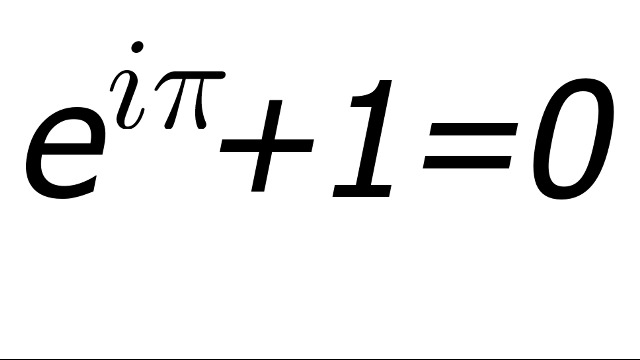Move over, Mozart: for mathematicians, the beauty of Euler’s Identity (pictured) will beat a masterpiece painting or sumptuous symphony any day. Credit: Public Domain
In a new paper published in the open-access journal Frontiers in Human Neuroscience, researchers used functional magnetic resonance imaging (fMRI) to image the brain activity of 15 mathematicians when they viewed mathematical formulae that they had previously rated as beautiful, neutral or ugly.
The results showed that the experience of mathematical beauty correlates with activity in the same part of the emotional brain – namely the medial orbito-frontal cortex – as the experience of beauty derived from art or music.
Professor Semir Zeki, lead author of the paper from the Wellcome Laboratory of Neurobiology at UCL, said: “To many of us mathematical formulae appear dry and inaccessible but to a mathematician an equation can embody the quintescence of beauty. The beauty of a formula may result from simplicity, symmetry, elegance or the expression of an immutable truth. For Plato, the abstract quality of mathematics expressed the ultimate pinnacle of beauty.”
“This makes it interesting to learn whether the experience of beauty derived from such as highly intellectual and abstract source as mathematics correlates with activity in the same part of the emotional brain as that derived from more sensory, perceptually based, sources.”
In the study, each subject was given 60 mathematical formulae to review at leisure and rate on a scale of -5 (ugly) to +5 (beautiful) according to how beautiful they experienced them to be. Two weeks later they were asked to re-rate them while in an fMRI scanner.
The formulae most consistently rated as beautiful (both before and during the scans) were Leonhard Euler’s identity, the Pythagorean identity and the Cauchy-Riemann equations. Leonhard Euler’s identity links five fundamental mathematical constants with three basic arithmetic operations each occurring once and the beauty of this equation has been likened to that of the soliloquy in Hamlet.
Mathematicians judged Srinivasa Ramanujan’s infinite series and Riemann’s functional equation as the ugliest.
Professor Zeki added: “We have found that, as with the experience of visual or musical beauty, the activity in the brain is strongly related to how intense people declare their experience of beauty to be – even in this example where the source of beauty is extremely abstract. This answers a critical question in the study of aesthetics, one which has been debated since classical times, namely whether aesthetic experiences can be quantified.”
Reference: Zeki, S., Romaya, J. P., Benincasa, D. M. T., & Atiyah, M. F. (2014). The experience of mathematical beauty and its neural correlates. Frontiers in Human Neuroscience, 8. https://doi.org/10.3389/fnhum.2014.00068
This article has been republished from the following materials. Note: material may have been edited for length and content. For further information, please contact the cited source
Source: Mathematical Beauty Activates the Same Brain Regions as Great Music or Art | Technology Networks













